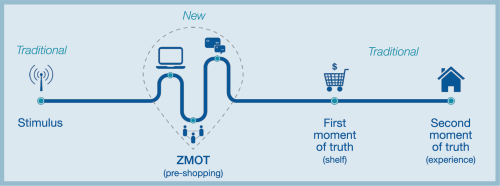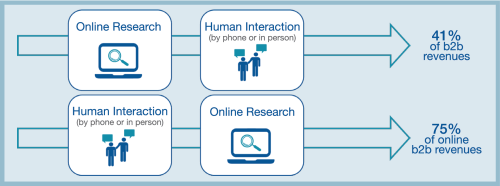Our brains make decisions before we become aware of them. When presented with a range of products, a choice is made seven seconds before consciousness kicks in. So what does this mean for marketers?
Consumer packaged goods giant, Procter & Gamble, was the first to recognise the importance of these few seconds in the context of shoppers confronted with a product choice. P&G called this critical point in the path to purchase the First Moment of Truth (FMOT). Having spent millions on above-the-line traditional advertising, the company started to reconsider the allocation of its promotional budget to more targeted, below-the-line communications such as point-of-sale media.
P&G soon recognised that the potential to influence the consumer far exceeds the First Moment of Truth, as every interaction with the product upon purchase represents an opportunity to drive a stronger customer experience, coined by P&G as the Second Moment of Truth (SMOT). Such moments occur two billion times a day for P&G brands!
The proportion of people who would consider a like-for-like replacement of a product or service has stayed the same over the years at between 60% and 80%. However, only a few years ago, Google published a report on the major change to the path to purchase – that of digital influences, as shown by the statistics below.
According to Google…
- 93% of adults say they regularly or occasionally research products online before buying them in a store
- 70% of Americans say they look at product reviews before making a purchase
- 41% of Europeans have changed their mind about what brand to buy as a result of researching choices online
The digital pre-shopping experience is an important, preliminary stage in the path to purchase and was aptly named by Google as the Zero Moment of Truth (ZMOT). In this digital age, a brand can be presented, reviewed and purchased within seconds. Online visibility is the name of the game in succeeding in the digital marketplace.

Although the decision-making unit and process are more complex in b2b versus consumer markets, b2b decision-makers are increasingly learning from their b2c experiences, as the digital revolution is now driving b2b behaviours. A key difference in the b2b world, however, is the need for multi-channel marketing and distribution. The winning b2b company employs the right mix of offline (e.g. print), online, mobile and human interactions, evident with the key statistics below, recently published by Boston Consulting Group.

Investing in the Zero Moment of Truth will assist companies in staying ahead of the competition, if the right measures are taken. The following four steps are a guide on how to make ZMOT a success for your company:
-
Make search engine optimisation a priority. Be obsessive about ensuring your brand is in the top five results for as many search string configurations as possible.
-
Understand what the market values in your brand and products and push this online. McKinsey recently reviewed various global b2b companies’ websites and found that over 80% communicated corporate social responsibility, sustainability practices and global reach – none of which was of interest to buyers.
-
Encourage reviews and testimonials on your brand and its products. These add credibility to your offer and help spread the word. Be sure to capture and learn from these valuable voice-of-the-customer insights.
-
Make Zero Moment Of Truth someone’s responsibility in your company – driving and monitoring efforts. Ensure this important role has backing from senior leadership.


